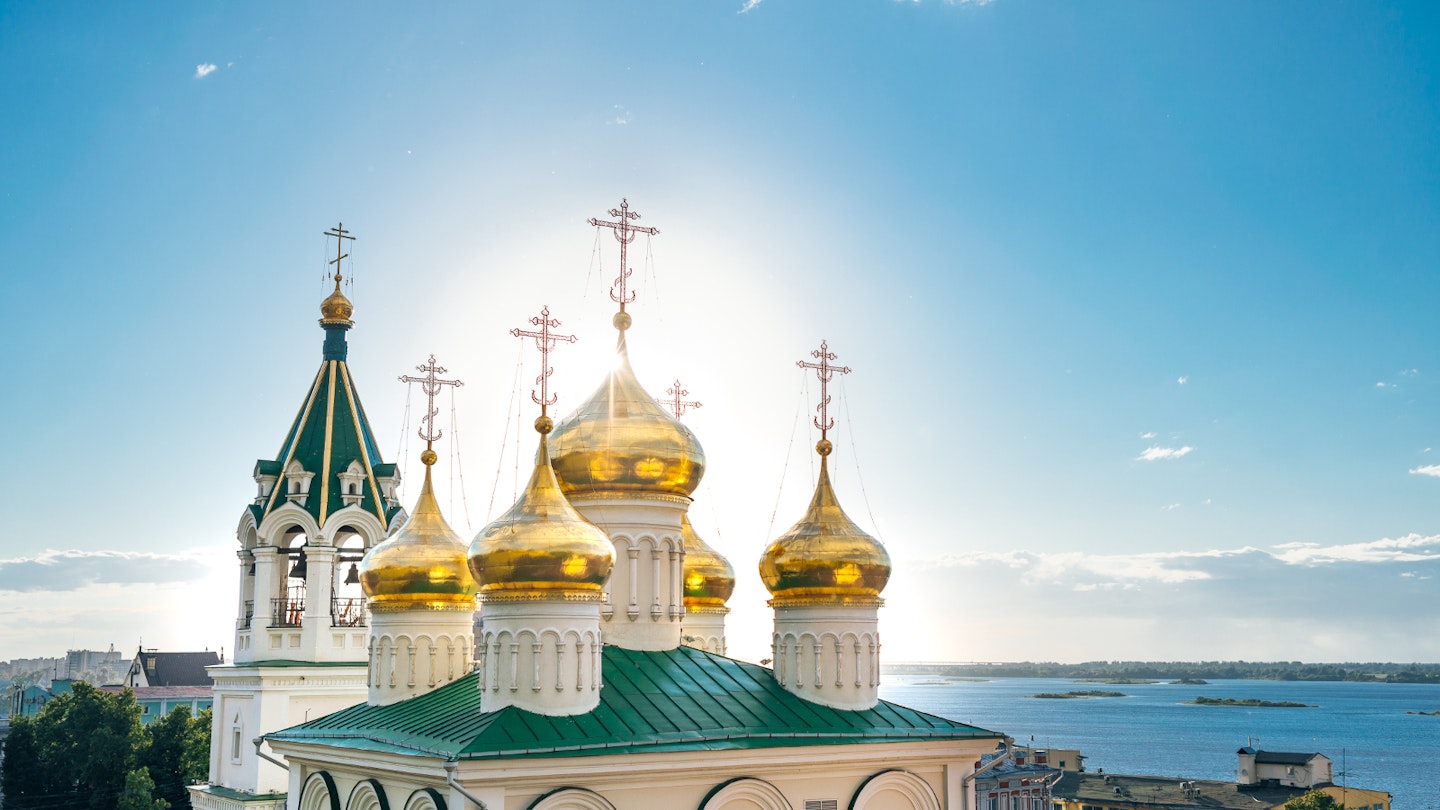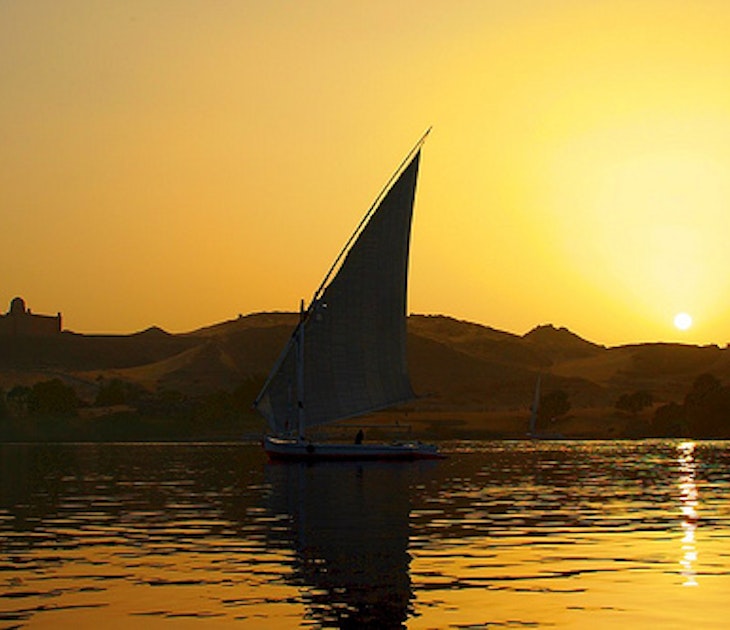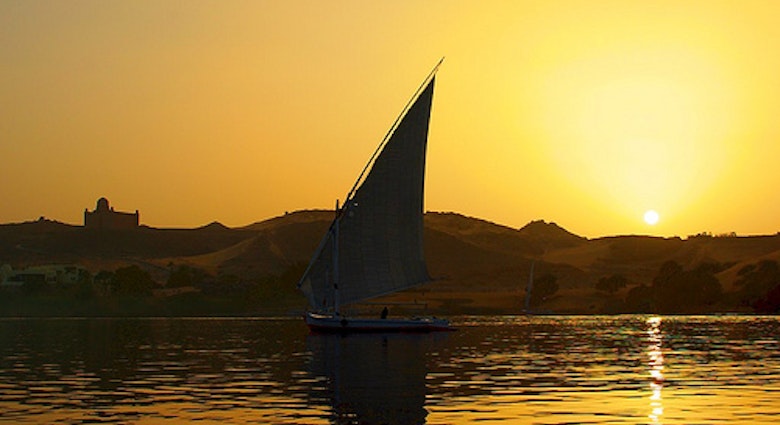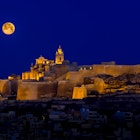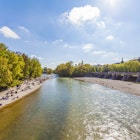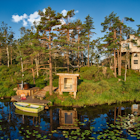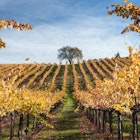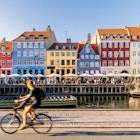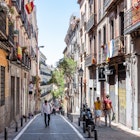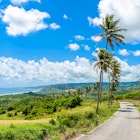The Volga, at 3530km in length, is not only one of Russia’s longest rivers but plays an outsized role in Russian history as well. It was the main conduit for Moscow’s push southward, over the centuries, to the Caspian Sea. It provided the backdrop for Tsar Ivan the Terrible’s epic victory over the Khanates of Kazan, the birth of Vladimir Ilyich Lenin at Ulyanovsk, and the triumph of the Red Army over Nazi Germany at Volgograd (Stalingrad). It also has long stretches of arresting natural beauty, particularly the delta region south of Astrakhan.
With a little advance planning, the Volga region is easy to explore. From June to September, several companies offer cruises. The major ports are also connected by rail, with distances between cities often spaced at eight- to 12-hour intervals that can be covered overnight. We’ve traced out a train tour of five stops – from Nizhny Novgorod to Astrakhan – that show off the region’s history and natural splendour. (All except Astrakhan are also the host cities for the 2018 FIFA World Cup.)
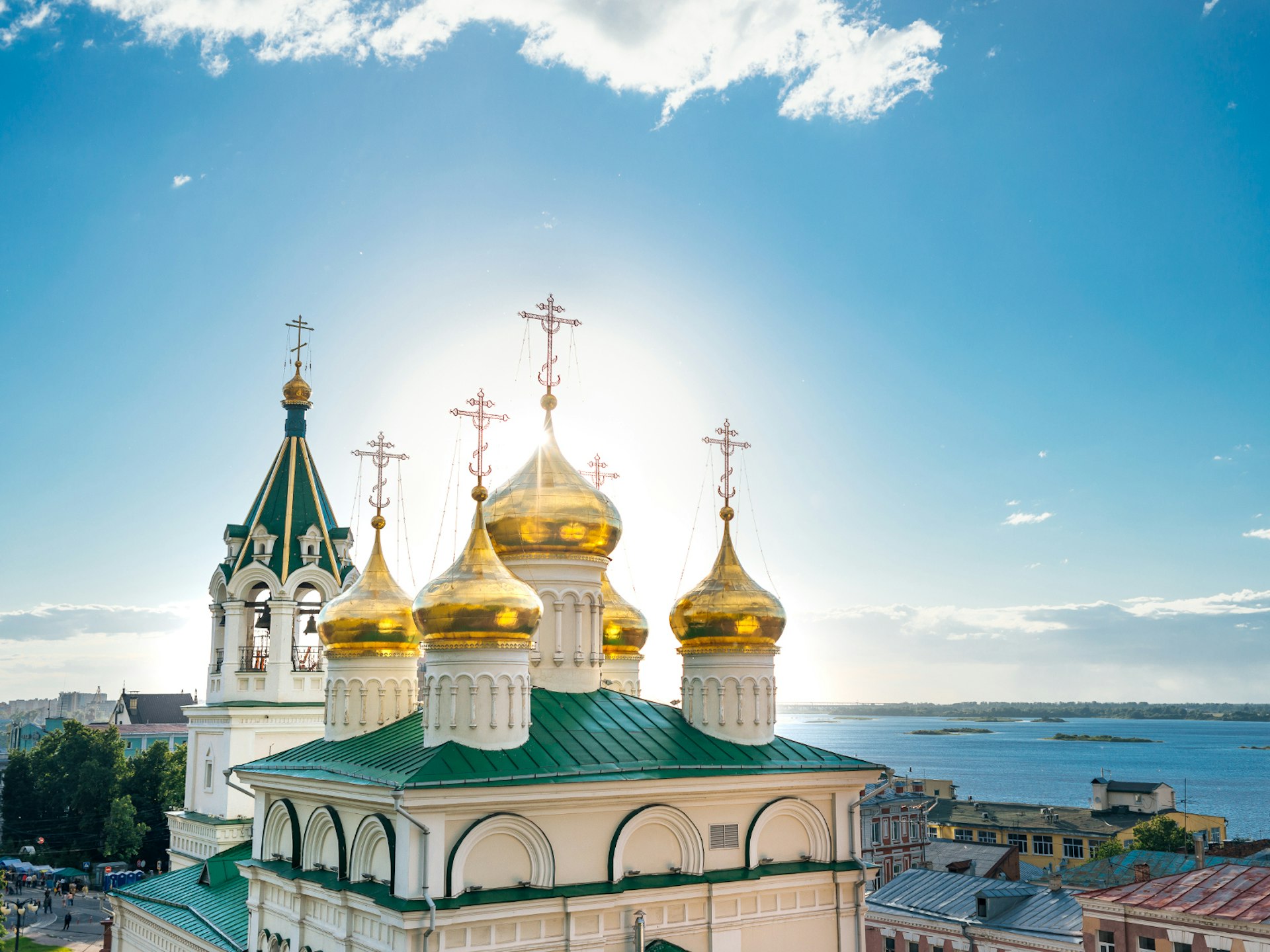
Nizhny Novgorod
As Moscow expanded southward in the 16th century, it left a legacy of impressive fortresses – kremlins – in its wake, and Nizhny Novgorod’s kremlin boggles both for its size and commanding view of the river. These days, the kremlin houses the city’s best museums, including the Nizhegorodsky State Art Museum, with its impressive abstracts, and the recently renovated National Centre of Contemporary Art.
During the Soviet period Nizhny – then known as Gorky – was closed to foreigners, making it the perfect place to banish individuals deemed inconvenient to the regime. Physicist and dissident Andrei Sakharov was exiled here for eight years in the 1970s and ’80s. His modest apartment has been converted to a quirky museum and looks the same as the day he left in 1986.
Nizhny has some excellent restaurants, including Restoratsia Pyatkin, which offers Volga fish specialities and fresh-brewed kvas (a tangy drink of fermented rye bread). For an overnight stay, look no further than family-run Jouk-Jacques on pedestrianised Bolshaya Pokrovskaya ul, a short walk from the kremlin.
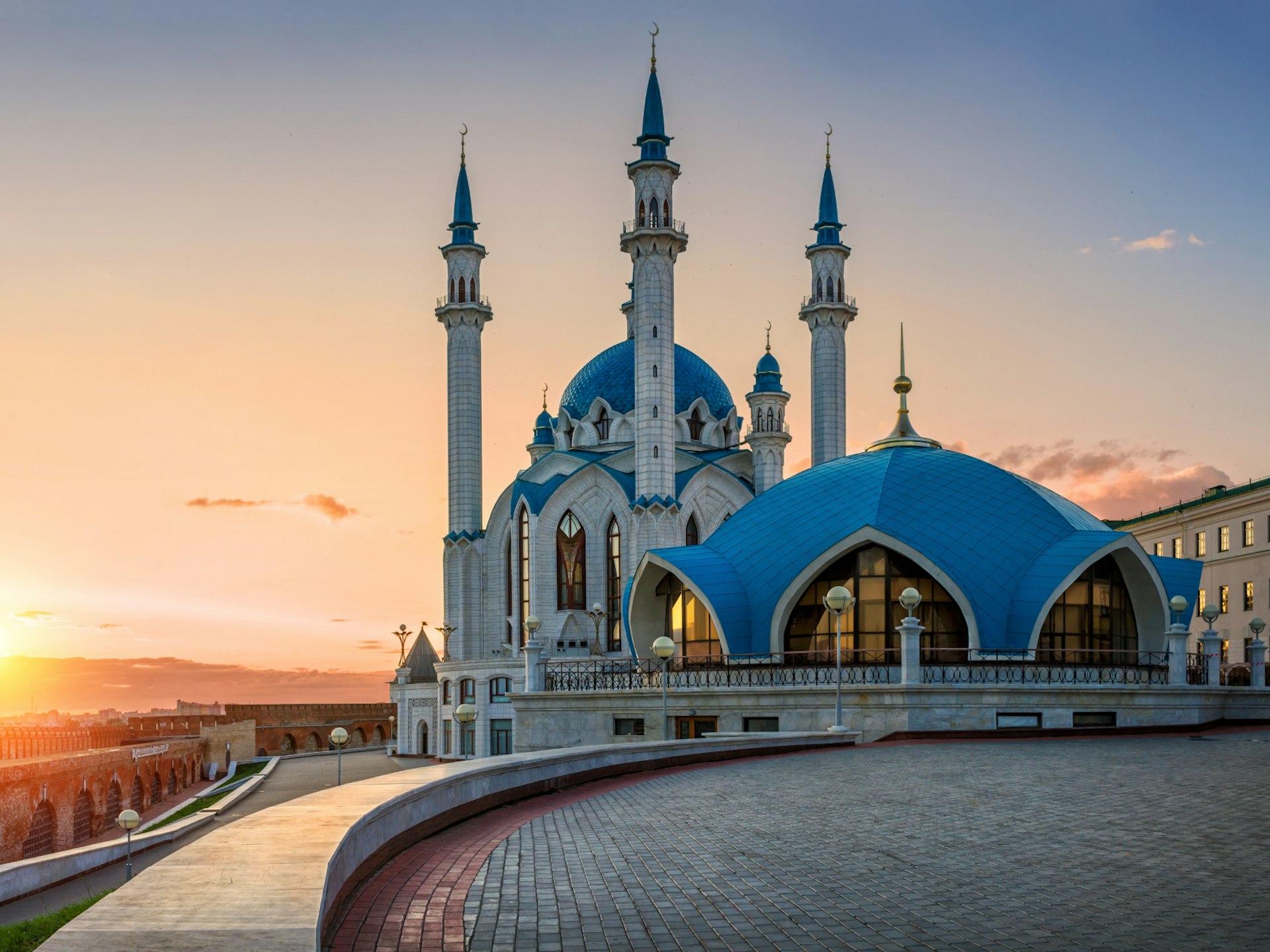
Kazan
From Nizhny, an overnight train brings you to Kazan, the former Khanate stronghold and present-day capital of the autonomous Republic of Tatarstan. A trip here affords the chance to experience the unique food and culture of the Volga Tatars, an ethnic-Turkic, Islamic people that make up about half the city’s population.
In keeping with the multiethnic character, Kazan’s gleaming white kremlin holds both the enormous Kul Sharif Mosque and the Annunciation Cathedral. A leisurely stroll here offers breathtaking vistas out over the river and the chance to see some impressive art at the local branch of the Hermitage Museum. South of the kremlin, the remnants of Ivan the Terrible’s Siege of Kazan lives on at the Old Tatar Settlement, a ramshackle neighbourhood of colourful wooden houses that date from the time when ethnic Tatars could only live in this part of the city.
Sample traditional Tatar chak-chak, a prized sweet made from baked dough and honey, at the Chak-chak Museum (chak-chak.muzeino.ru), or dive into possibly harder-to-swallow Tatar classics like stewed horsemeat or mutton at Dom Tatarskoy Kulinarii. Giuseppe Hotel is an Italian-owned boutique hotel within easy walk of the kremlin.
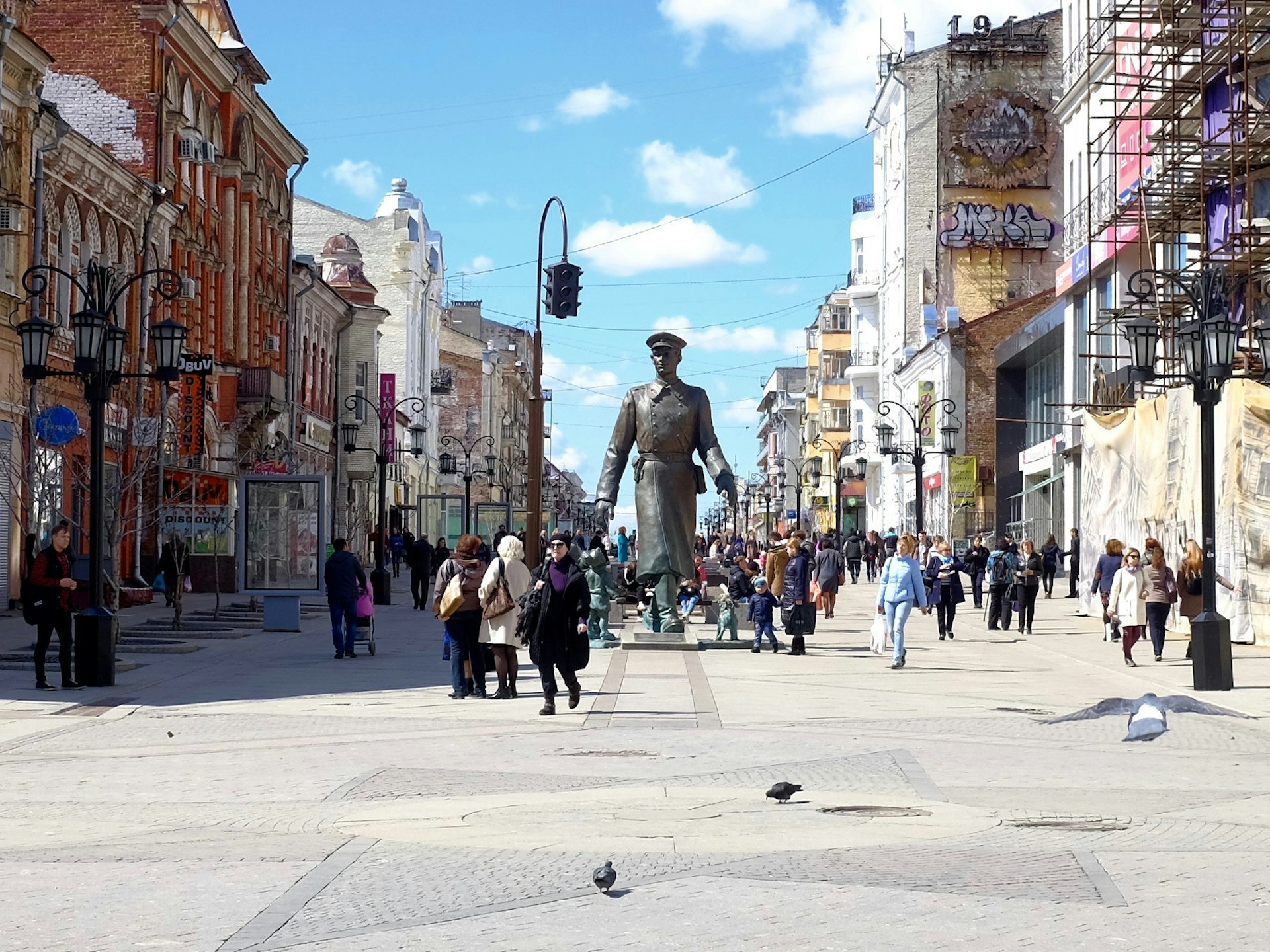
Samara
From Kazan, head south on the train to the bustling port of Samara. Truth be told, for a city of its size (1.16 million people) Samara lacks for top sights, though it’s got a lively vibe and a beautiful riverfront park. The only in-town must is a subterranean WWII-era bunker built for Stalin in the event the Nazis over-ran Moscow, though it was never used.
Outside the city, Samara is a jumping-off point for hiking the Zhiguli Hills across the river on the western bank. The river loops around the hills to create a peninsula encompassing some 32,000 hectares of national forest reserve and plenty of trails.
There are lots places to eat well. Staraya Kvartira combines excellent Russian cooking with a memorable setting in a restored Soviet-era flat. For an overnight stay, try Hotel Europe, a quirky but friendly inn housed in a mustard-yellow mansion dating from 1902.
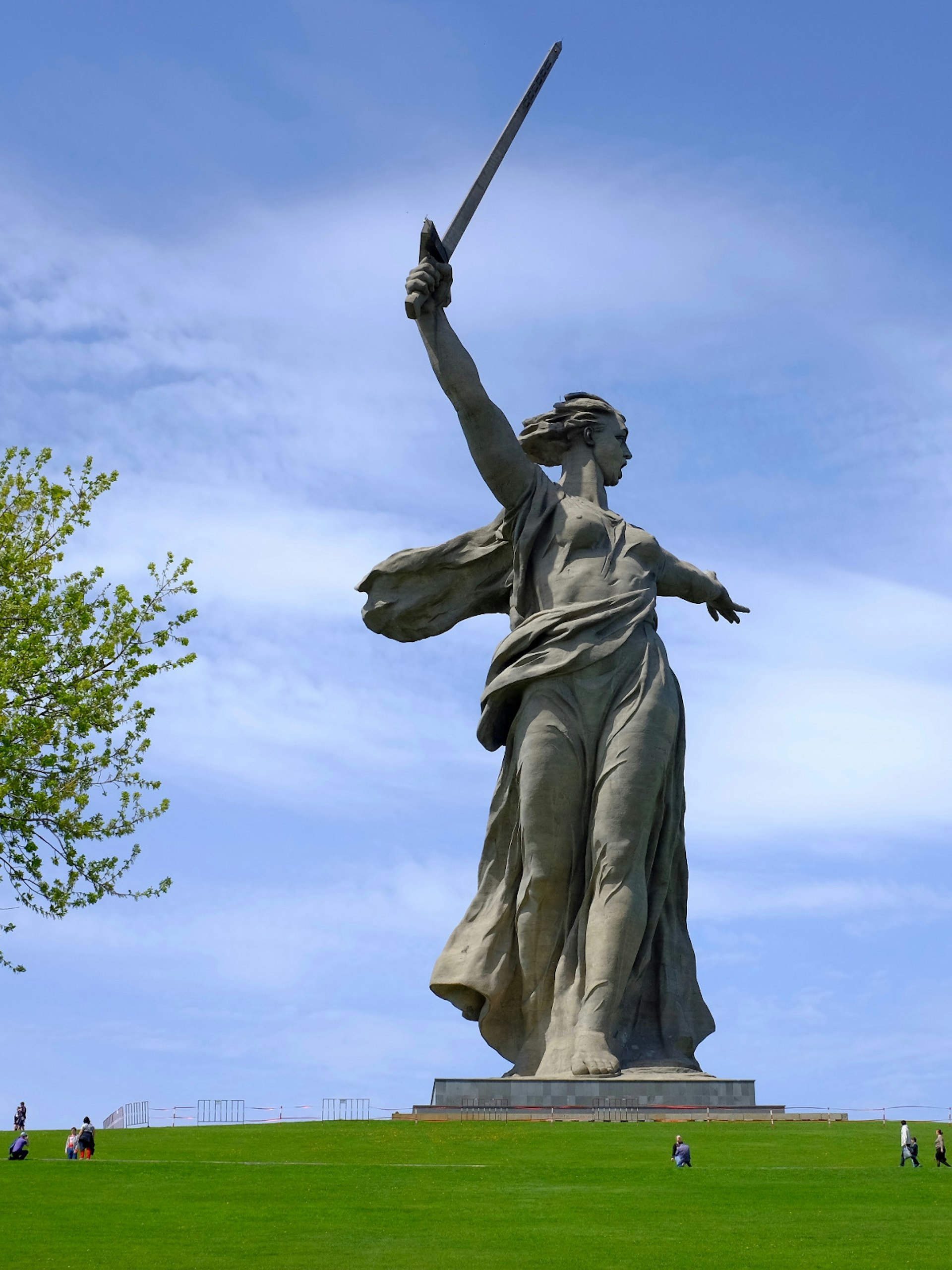
Volgograd
Hop the overnight train south for the long haul (17 hours) to Volgograd, a city lionised in Russian history books as the place where the WWII Nazi juggernaut was finally halted. This is where the Battle of Stalingrad was fought from late 1942 to early 1943 and where more than a million people died. In the aftermath of the battle, the Soviets rebuilt the city in pomp and palaces and it remains an impressive, graceful place.
Take the high-speed tram 3.5km north of the centre to see the immense Mamaev Kurgan memorial complex, topped by a 72m-high statue of Mother Russia. Spend the better part of the day ambling around the grounds to admire the evocative statues, reflecting pools, church, cemetery and eternal flame. Back in town, the Panorama Museum of the Battle of Stalingrad tells the story of the battle in eight large exhibition halls and a 360-degree panorama.
Volgograd’s lively riverfront has lots of spots to grab a bite. Hungry (on the central Alley of Heroes) is a modern cafe with hearty salads and authentic wood-fired pizzas. Stary Stalingrad is an affordable boutique hotel offering nicely furnished rooms with an individual touch.
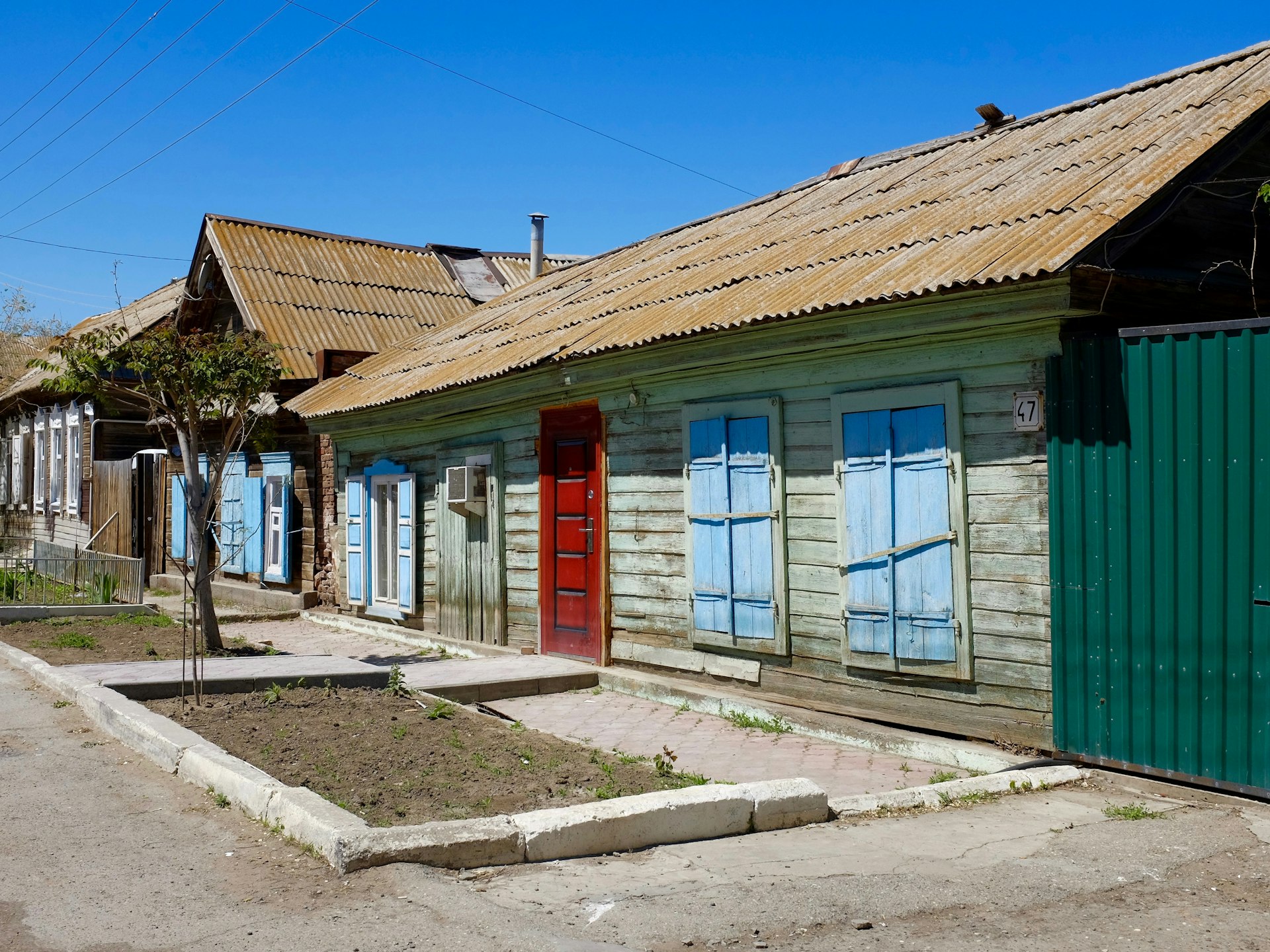
Astrakhan
Ethnically diverse Astrakhan sits north of the river’s end and is Russia’s face on the Caspian Sea. Unsurprisingly – given the strategic location – the city sports an impressive 16th-century kremlin, stuffed with churches and museums. There’s also a pretty riverfront promenade that stretches on (literally) for miles.
Astrakhan is the main staging area for forays into the delta, which starts some 70km south. Though it’s possible to reach the delta by private transport, the trip (including the necessary paperwork) is much easier if going through a private agency. Several Astrakhan-based companies, including Cezar and Procosta, offer day excursions and longer trips for activities like boating, fishing and birdwatching.
Astrakhan is the ideal spot to sample the region’s culinary diversity, so don’t miss the chance to take a meal at Mindal (ul Ulyanovykh 10), where the menu is equally fluent in Azeri, Persian, Kazakh and Russian cooking. The nearby Astrakhanskaya Hotel (astrakhanskaya-hotel.ru) offers affordable luxury in a late-19th-century town palace.

Make it happen
The starting point on this route through the Volga region, Nizhny Novgorod has excellent plane and train connections to Moscow. On the return, Astrakhan’s small airport has several daily flights to Moscow. For river cruises, leading local companies include Infoflot (infoflot.com), Kruiz (kruiztur.ru) and Volga Heritage (rech-vokzal.ru), among others.

